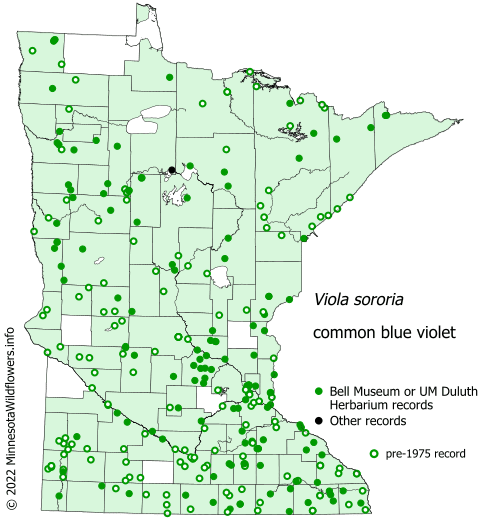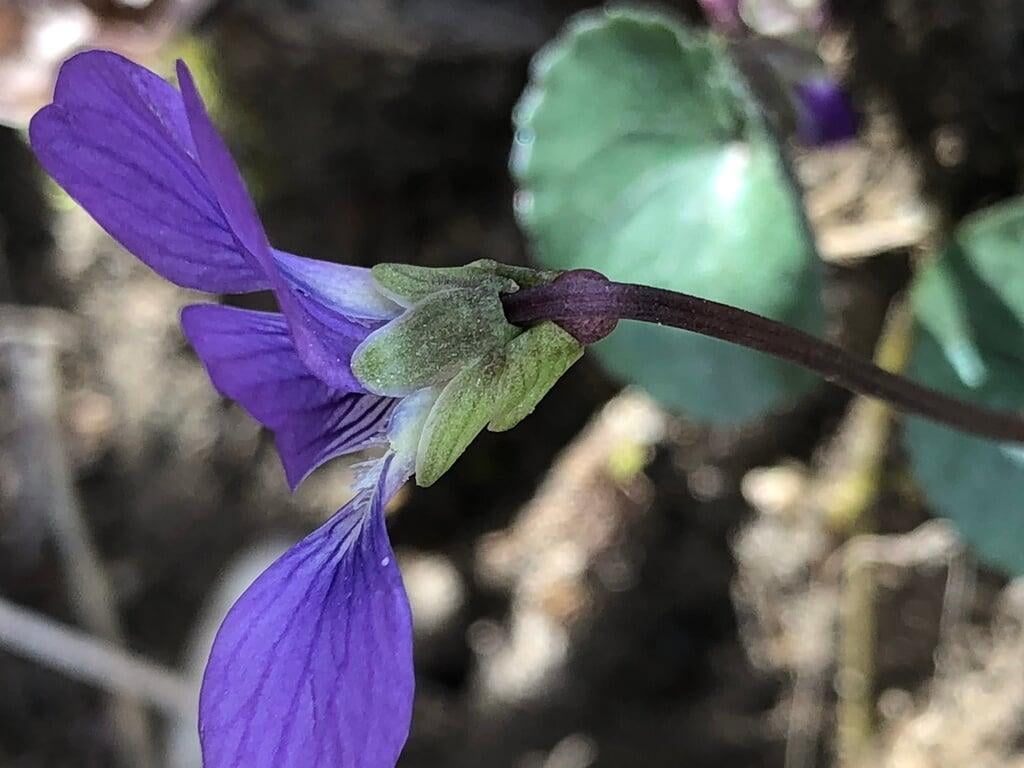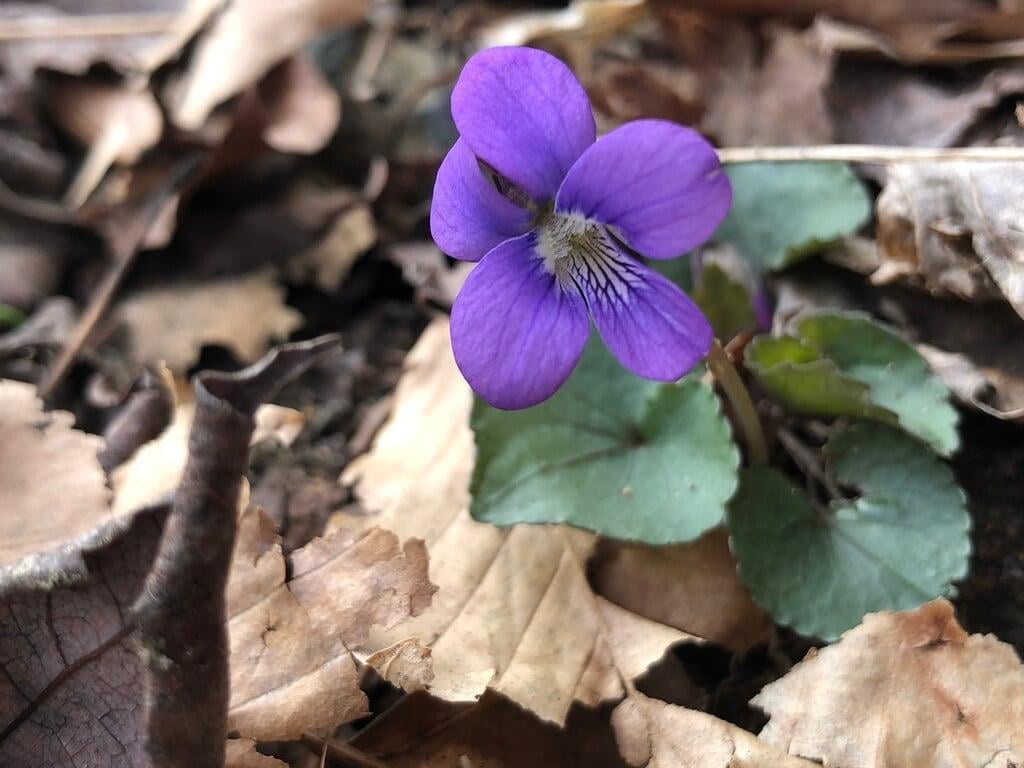Viola sororia
Downy blue violet Description:
Viola sororia, commonly known as the Downy blue violet, is a perennial flowering plant that is native to eastern North America. It is often found in meadows, woodlands, and along roadsides and stream banks.
The plant has a low-growing habit and typically reaches heights of 3-8 inches, although it can grow up to 12 inches in ideal conditions. It has heart-shaped leaves that grow from a basal rosette and produces a profusion of small, delicate, blue-violet flowers in early spring.
Viola sororia is highly valued for its ornamental properties and is a popular choice for naturalizing in woodland gardens, meadows, and other naturalistic settings. It is also a great plant for attracting pollinators such as bees and butterflies. The plant prefers well-drained soils in partial shade to full sun, and it can be easily propagated from seed or division.
Overall, Viola sororia is an attractive and hardy plant that adds a burst of color to any garden or landscape in early spring. It is also highly adaptable and can thrive in a wide range of growing conditions.
Native Range:
Downy blue violet is found across the entire state of Minnesota. More broadly, the Downy blue violet is generally found in the central and Eastern United States.
Standard Plant Information:
Plant Height: 3" - 8" inches
Bloom Time: April - June
Preferred Habitat: Does well in part shade to full sun. Often found in woods and fields.
Sowing:
For most homeowners, the best option is to scatter seed on the ground by hand broadcasting at a minimum of 16-64 pls ounces per acre. For even coverage, we recommend that you broadcast seed in perpendicular rows across the site to ensure even coverage.
You’ll want to broadcast any grass seed first, which will get raked into the soil lightly. Next, it is ideal to mulch the area lightly with either a clean (no seed) straw or preferably with our native Little Bluestem straw, sold at our retail garden centers. After a light mulching is complete, now it’s time to broadcast your native wildflower seeds, which should not be raked into the soil. A good rain or watering is sufficient to cover the seed.
Planting:
Simply dig a hole in the soil slightly larger than the plant’s roots. Ensure that the soil line of the plant is maintained during the transfer (i.e. the plant should be at the same level with the ground as it was in the pot). Pack any loose dirt back around the plant and make sure you water it well the same day to ensure it has the best chance of survival.









